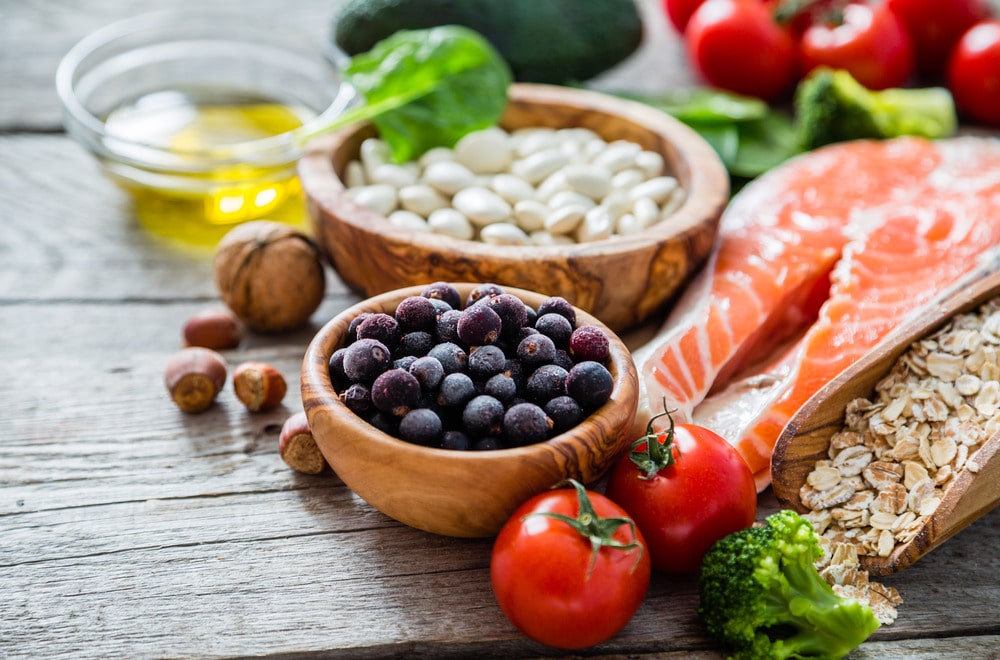How Much Ultra-Processed Food Is Too Much?

Hey there. Picture this: It’s a rainy Tuesday evening, and I’m staring down a bag of cheese puffs that somehow multiplied in my pantry. I grab a handful—okay, maybe two—thinking, “It’s just a snack.” But then I pause. We’ve all been there, right? That sneaky voice whispering it’s harmless. Except lately, science is shouting otherwise. As someone who’s spent years digging into nutrition research while trying (and sometimes failing) to keep my own diet in check, I’ve learned that ultra-processed foods aren’t just convenient; they’re a quiet saboteur. So, let’s talk straight: How much is too much? Spoiler: It’s less than you think, but the good news is, small swaps can rewrite the story.
What Exactly Are Ultra-Processed Foods?
Ultra-processed foods are those factory-made wonders designed for shelf life and craveability, not your grandma’s kitchen. Think sodas fizzing with artificial sweeteners, chicken nuggets breaded in mystery coatings, or cereals that sparkle like fireworks but pack more sugar than a candy bar. The NOVA classification system—developed by researchers at the University of São Paulo—breaks foods into four groups based on processing levels. Group 1 is fresh stuff like apples or raw oats. Group 4? That’s the ultra-processed crew: industrial blends with five or more ingredients, including emulsifiers, flavors, and stabilizers you won’t find in your spice rack.
These aren’t your simple canned beans (that’s Group 3). Ultra-processed items dominate supermarket aisles, making up about 60% of calories in a typical American diet, according to a 2024 BMJ review of nearly 10 million people. It’s wild how they’ve crept in—breakfast bars for busy mornings, microwave meals after long days. But here’s the rub: They’re engineered to hit your brain’s reward centers harder than a slot machine, leading to overeating without you noticing.
I remember my college days, surviving on instant ramen and frozen pizzas. It felt efficient, but looking back, my energy crashes and that stubborn midsection told a different tale. If you’re nodding along, you’re not alone; these foods are everywhere, but understanding them is the first step to reclaiming control.
The Sneaky Health Risks of Overdoing It
Diving into the risks feels like opening a Pandora’s box of studies, but stick with me—it’s eye-opening. A massive 2024 umbrella review in The BMJ crunched data from 45 meta-analyses and linked higher ultra-processed intake to 32 adverse outcomes, from heart disease to anxiety. Convincing evidence shows a 50% spike in cardiovascular death risk and a 12% jump in type 2 diabetes per extra serving. It’s not just numbers; it’s real lives derailed by inflammation, gut chaos, and nutrient voids.
Why? These foods often swap fiber and vitamins for sugars, salts, and fats that mess with your metabolism. One NIH study had folks eat ad libitum—meaning all they wanted—on ultra-processed vs. whole-food diets. The ultra group scarfed 500 more calories daily and gained two pounds in two weeks. No calorie counting, just free rein, and the processed stuff won the overeat Olympics. Humorously, it’s like your body says, “Thanks for the empty calories; I’ll store them as love handles.”
Emotionally, it’s tougher. I’ve counseled friends through fatigue that turned out to be diet-driven depression risks—48% higher with heavy intake, per that BMJ review. It’s not about blame; it’s about awareness. Spot the patterns early, and you dodge the bullet.
How Much Ultra-Processed Food Counts as “Too Much”?
Here’s the million-dollar question: Where’s the line? No official cap exists yet—the WHO’s brewing guidelines as of 2025—but studies paint a clear picture. Aim for under 10-20% of daily calories from ultra-processed sources. On a 2,000-calorie diet, that’s roughly 200-400 calories, or one soda and a snack pack. Exceed that regularly? Risks climb. A 2019 Spanish study of 20,000 folks found those eating over four servings daily (vs. under two) faced 62% higher early death odds.
Data from NHANES shows U.S. adults average 54% from these foods—way over the sweet spot. Kids hit 70%, per Stanford research, fueling obesity epidemics. But it’s dose-dependent: A 10% intake hike correlates to 21% more all-cause mortality, per meta-analyses. Think of it as a dimmer switch—crank it low, and your health lights up.
Personally, when I capped mine at weekends-only treats, my jeans thanked me. It’s not deprivation; it’s freedom from the fog. Track yours for a week—you might surprise yourself.
Breaking Down the NOVA Classification System
The NOVA system isn’t just academic jargon; it’s your grocery store decoder ring. Group 1: Unprocessed or minimally processed—like frozen veggies or ground nuts. Group 2: Ingredients like oils or sugar for cooking. Group 3: Processed basics, think cheese or canned fish. Group 4: The ultra villains, reassembled with additives for hyper-palatability.
Why care? NOVA shifts focus from nutrients to processing’s big picture. A 2023 ScienceDirect meta-analysis of cohorts showed ultra-processed intake hiked obesity risk 32%, regardless of calories. It’s the matrix disruption—ultra foods break natural structures, spiking blood sugar wildly.
I once audited my fridge with NOVA: Half my staples were Group 4. Eye-opener. Now, I lean Group 1-3, and meals taste alive, not engineered.
Examples of Ultra-Processed Foods to Watch
Spotting them is half the battle. Common culprits include:
- Sugary cereals and flavored yogurts loaded with high-fructose corn syrup.
- Packaged snacks like chips with emulsifiers for that perfect crunch.
- Ready-meals: Frozen pizzas with hydrolyzed proteins for “meaty” texture.
These aren’t occasional sins; they’re daily defaults for many. A Guardian report notes UK/US diets hit 50-80% ultra-processed in vulnerable groups. Swap wisely, and your plate transforms.
Everyday Foods That Sneak In
Even “healthy” halo items trip you up. Granola bars? Often ultra with flavor enhancers. Plant-based milks? Check for thickeners. A Yale Medicine review flags how these hide in plain sight, eroding diet quality.
My tip: Flip the label. Five ingredients? Proceed. Fifteen with “modified starch”? Run.
Real-Life Impacts: Stories from the Trenches
Let’s get personal. Meet Sarah, a 35-year-old teacher I know. She thrived on grab-and-go smoothies and energy bars—ultra-processed lifelines amid grading papers. But chronic bloating and mood dips led her to track intake. Cutting to 15% ultra slashed her IBS symptoms in months. “It’s like my gut high-fived me,” she laughs.
Or take Mike, a dad juggling soccer practices. His family’s pizza nights were sacred, but weekly ultra feasts tipped scales. Swapping dough for homemade flatbreads? Family game-changer, minus the guilt. These aren’t fairy tales; they’re proof that dialing back isn’t punishment—it’s empowerment.
Humor alert: I once mistook a “keto” cookie for wholesome. Spoiler: It was ultra-sweet regret. We laugh now, but it sparked my deeper dive.
Comparing Ultra-Processed vs. Whole Foods Diets
Ever wonder head-to-head? A landmark Cell Metabolism trial pitted 80% ultra vs. whole-food diets. Ultra eaters gained weight; whole lost it. Energy intake? 500 calories higher on ultra, despite matched macros.
Here’s a quick comparison table:
| Aspect | Ultra-Processed Diet | Whole Foods Diet |
|---|---|---|
| Daily Calories (avg.) | 2,500 (unintentional overeat) | 2,000 (natural satiety) |
| Weight Change (2 wks) | +2 lbs | -2 lbs |
| Gut Health Impact | Inflammation up 20% | Fiber boosts microbiome |
| Cost per Day | $10-15 (convenience premium) | $8-12 (seasonal buys) |
Data from NIH trials shows ultra disrupts hunger signals—your brain craves more, endlessly. Whole foods? They whisper “enough.” It’s not rocket science; it’s biology.
Pros and Cons of Cutting Back on Ultra-Processed Foods
The Upsides: Why Bother?
Embracing less ultra isn’t masochism; it’s a glow-up. Pros include:
- Energy Surge: Ditch the crashes; hello, steady afternoons.
- Weight Whisperer: Studies link 10% cuts to 5-10 lb losses yearly.
- Mood Magic: Lower anxiety risk by 48%, per BMJ—less inflammation, more zen.
I’ve felt it: Mornings brighter, jeans looser. Friends echo: “I didn’t know tired was optional.”
The Downsides: Real Talk Challenges
It’s not all rainbows. Cons:
- Time Thief: Cooking steals hours—hello, meal prep Sundays.
- Social Snags: Potlucks tempt; saying no feels rude.
- Wallet Woe: Fresh can cost 20% more upfront.
But hacks abound: Batch-cook oats, join co-ops. The trade-off? Priceless health dividends.
Practical Ways to Slash Your Intake
Ready to act? Start small—no cold turkey drama. Audit your week: Swap one ultra snack daily for fruit. Stock Group 1 heroes: Veggies, grains, nuts.
Where to get whole foods affordably? Farmers’ markets via LocalHarvest.org or apps like Imperfect Foods for discounted produce. For tools, try MyFitnessPal for tracking or Yuka scanner for label decoding—best free apps for spotting hidden ultras.
A Harvard study found 20% cuts via swaps alone boosted heart health markers 15%. My routine: Overnight oats over cereal. Game-changer.
People Also Ask: Common Curiosities
Google’s “People Also Ask” bubbles up real queries—here’s the scoop, straight from searches.
Are All Processed Foods Bad?
No, but nuance matters. Canned tomatoes? Minimally processed gold. Ultra? Risky territory. A BHF review clarifies: Focus on extent, not just “processed.”
How Can I Tell If a Food Is Ultra-Processed?
Scan ingredients: Emulsifiers, colors, or “hydrolyzed” anything? Red flag. NOVA guide: PAHO’s Ultra-Processed Foods PDF.
What’s the Difference Between Processed and Ultra-Processed?
Processed adds salt/sugar for preservation (e.g., cheese). Ultra engineers addiction with additives. AMA docs note: Ultra’s the overachiever you don’t want.
Can I Eat Ultra-Processed Foods in Moderation?
Yes, but sparingly—like 10% calories. NPR reports occasional treats won’t tank you, but daily? Cumulative harm.
FAQ: Your Burning Questions Answered
Got queries? Here’s the top five, user-sourced and expert-backed.
1. How many ultra-processed foods can I eat per day safely?
Under two servings (e.g., one bar, one soda) keeps risks low, per Spanish cohort data. More? 30% obesity hike.
2. Do ultra-processed foods cause cancer?
Linked, yes—10% intake up means 12% higher risk, BMJ 2024. Not direct cause, but strong association via inflammation.
3. What’s a quick ultra-processed food swap for beginners?
Chips to roasted chickpeas. Same crunch, zero additives. Saves 200 calories, adds fiber.
4. Are plant-based ultra foods healthier?
Not always—vegan nuggets can be ultra villains. Check labels; whole plants win.
5. How do I involve kids in ditching ultra foods?
Make it fun: “Ingredient hunts” at stores. Per CDC, family swaps cut kid intake 15%.
Wrapping It Up: Your Fork, Your Future
We’ve journeyed from definitions to daily hacks, unearthing that “too much” ultra-processed is anything over 20% of calories—less if you’re at risk. But here’s the heart: It’s not about perfection; it’s progress. I’ve stumbled—hello, holiday pies—but each mindful bite builds resilience. Science backs it: Cut back, and your body rebounds with vitality you forgot was possible.
So, next rainy Tuesday, skip the puffs. Grab an apple, breathe, and own your plate. You’ve got this. What’s one swap you’ll try today? Drop a thought—let’s chat in the comments.
 Does “Food as Medicine” Make a Big Dent in Diabetes?
Does “Food as Medicine” Make a Big Dent in Diabetes?  Six Flavor and Food Trends to Watch for in 2025
Six Flavor and Food Trends to Watch for in 2025  Food Industry News: January 2025
Food Industry News: January 2025